Administering liquid medication to your feline companion can seem like a daunting task. Did you know that cats are known for their ability to resist taking medicine? This blog post offers a step-by-step tutorial on mastering the art of giving your cat liquid medicine, making the process painless and stress-free.
Let’s make medicating your cat less of a challenge!
Key Takeaways
- Giving cats liquid medicine can be challenging due to difficulties in administering the medication, negative associations with medication, and cats’ sensitivity to taste and texture.
- The direct approach involves gently wrapping your cat in a towel, opening their mouth carefully, and inserting the syringe or dropper towards the back of their throat. Encourage swallowing by holding their mouth closed for a few seconds.
- Mixing the medication with your cat’s favorite food can make it easier for them to take it. Choose soft and wet foods that absorb the medicine well. Ensure they consume all of it by watching them while they eat.
- Be patient and gentle when giving your cat liquid medicine, reward them with treats after successful administration, work closely with your veterinarian for guidance and support, and consider using flavored medications that are more appealing to cats.
Contents
- Why Giving Cats Liquid Medicine Can Be Challenging
- The Direct Approach to Giving a Cat Liquid Medicine
- Mixing Liquid Medicine with Food
- Tips for Giving Cats Liquid Medicine
- Give a Difficult Cat Liquid Medicine
- Conclusion
- FAQs
- 1. How do I give my cat liquid medicine?
- 2. What should I do if my cat refuses to take the liquid medicine?
- 3. How much liquid medicine should I give my cat?
- 4. Are there any tips for making the process easier and less stressful for my cat?
- 5. Can I mix the liquid medicine with water or other liquids before giving it to my cat?
Why Giving Cats Liquid Medicine Can Be Challenging

Administering liquid medicine to cats can be challenging due to difficulties in administering the medication, negative associations with medication, and cats’ sensitivity to taste and texture.
Difficulty in administering medication
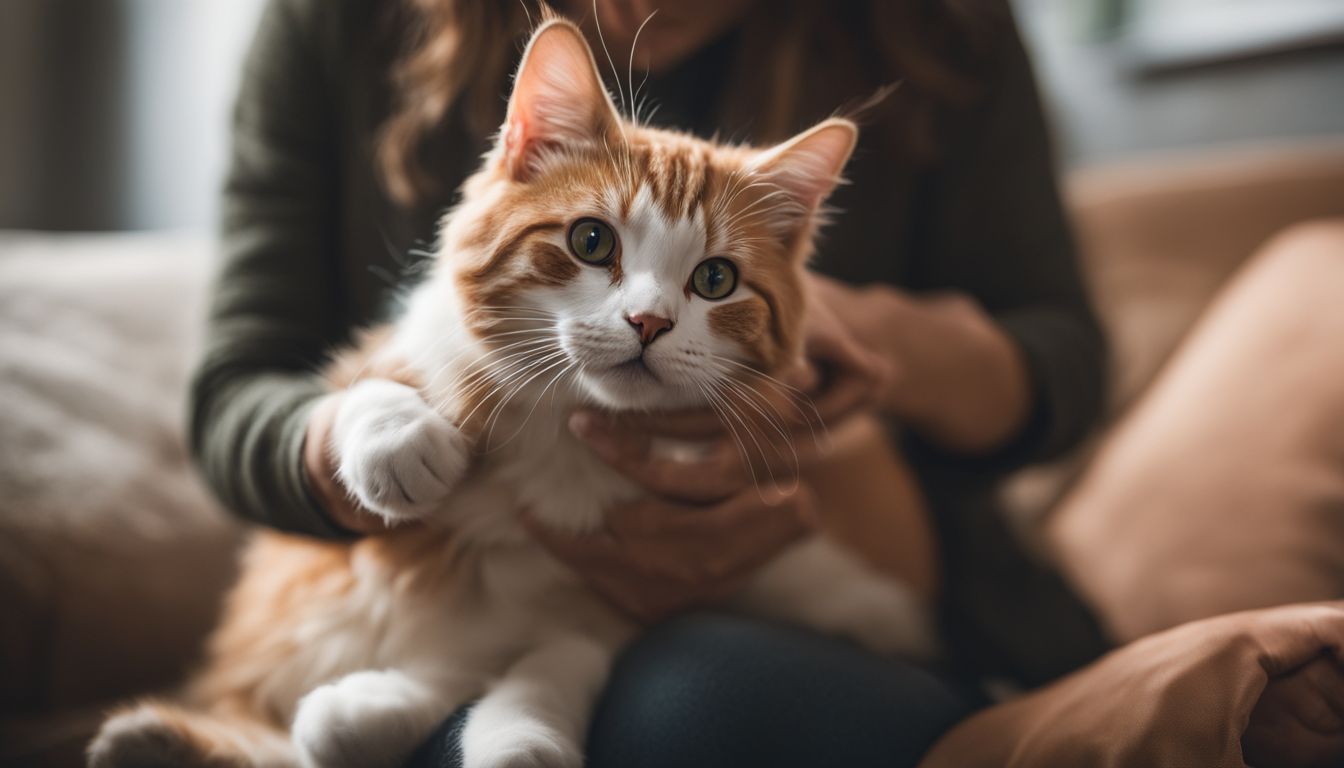
Giving cats medicine can be a tough job. Cats may squirm, scratch, or try to escape. They do not like the strange taste of the medicine in their mouth. Some cats will even refuse to swallow it.
Using a syringe might help get the liquid into your cat’s mouth. You have to be very careful so that you don’t hurt your cat or make them afraid of you. It’s also important to make sure your cat gets all of their medicine.
If they spit some out, they might not get better as quickly as they should.
Negative associations with medication
Cats can link bad things with medicine. The bitter taste of some drugs can make cats not want it. This is a big problem if your cat gets sick often. They may start to avoid you when they see the medication bottle or dropper.
Cats are also smart and quick learners. If being forced to take medicine hurts them, they might fight next time. It’s important to give liquid medicine in a gentle way so your cat doesn’t get scared or feel pain.
Sensitivity to taste and texture
Cats have a keen sense of taste and texture. This can make giving them medicine hard. Some liquid drugs may taste bad to cats because they are very bitter or sour. The strange feel of the drug in their mouth may also put them off.
Cats often don’t like new things, especially with food and drink. So, a sudden change can make your cat say no to its meal or medicine. Try using flavored medication as one way to help this problem.
The Direct Approach to Giving a Cat Liquid Medicine

To administer liquid medicine directly, first, wrap your cat in a towel to provide comfort and stability. Then, gently open their mouth and carefully insert the syringe or dropper towards the back of their throat.
Finally, encourage swallowing by holding the cat’s mouth closed for a few seconds.
Wrapping your cat in a towel
To give your cat liquid medicine, one helpful technique is to wrap your cat in a towel. This helps keep them calm and prevents them from scratching or moving around too much. Here’s how you can do it: gently place the towel over your cat’s back and secure it by tucking the ends underneath their body.
Make sure their head is free so they can breathe comfortably. By wrapping your cat in a towel, you create a sense of security that makes giving them medication easier and safer for both of you.
Opening your cat’s mouth
To give your cat liquid medicine, you’ll need to open their mouth. This can be a bit tricky, but it’s important for proper medication administration. One way to do this is by gently wrapping your cat in a towel to ensure they feel secure.
Then, using one hand to hold their head steady, use your other hand to tilt their head upward and gently pry open their mouth with your fingers. Be careful not to force it open too wide or cause any discomfort.
Once the mouth is open, you can carefully administer the medication using a syringe or dropper. Remember to be patient and gentle throughout the process to keep your cat calm and comfortable.
When opening your cat’s mouth for medication administration, make sure they are wrapped securely in a towel for comfort and safety. Use one hand to hold their head steady while tilting it upwards slightly.
Gently pry open their mouth with the fingers of your other hand, being careful not to cause any pain or discomfort. With the mouth open, you can then carefully administer the liquid medicine using a syringe or dropper as prescribed by the vet.
Encouraging swallowing
To encourage your cat to swallow the liquid medicine, you can gently hold their mouth closed and stroke their throat. This will help stimulate the swallowing reflex. You can also try blowing gently on their nose or rubbing their throat to encourage them to swallow.
It is important to be patient and gentle while doing this, as forcing the medication down their throat may cause them to become fearful or resistant in taking future doses. Remember to reward your cat with treats or praise after they have successfully swallowed the medication, as positive reinforcement can help create a more positive association with taking medicine.
Mixing Liquid Medicine with Food
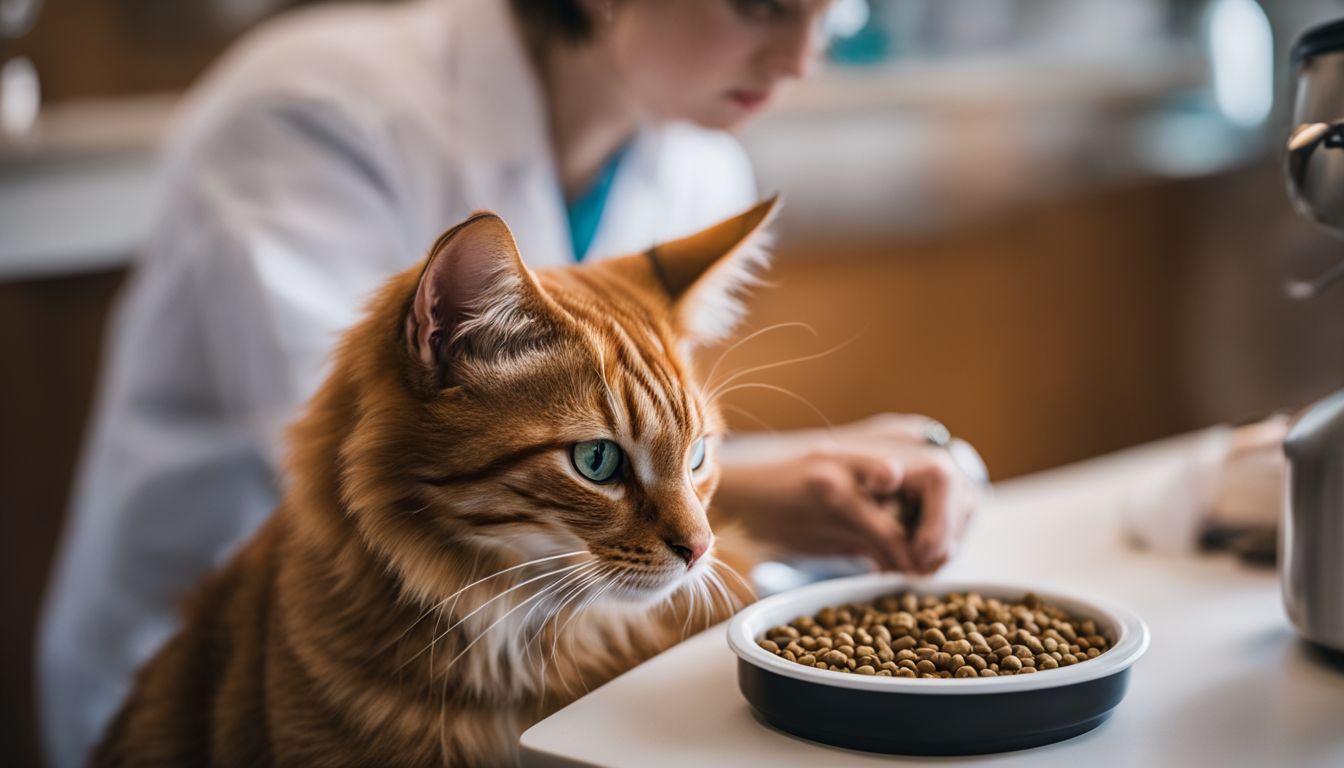
Mixing the medication with your cat’s favorite food can be an effective way to ensure they consume all of it. Find out how to choose the right food and ensure your cat gets their necessary dose by reading more.
Choosing the right food
To make it easier to give your cat liquid medicine, it’s important to choose the right food. Look for soft and wet foods like canned or pouch options, as these are easier to mix the medication into.
Avoid dry foods or treats, as they won’t absorb the medicine well. Make sure the food is something your cat enjoys and regularly eats, so they’ll be more likely to eat it with the medication mixed in.
By selecting the appropriate type of food, you can increase the chances of your cat taking their liquid medicine without any fuss.
Mixing the medication
To make giving your cat liquid medication easier, you can mix it with their food. Choose canned or wet food that your cat likes and is easy for them to eat. Make sure to follow the instructions from your veterinarian on how much medication to give.
Using a small spoon or dropper, carefully mix the prescribed amount of medication into the food. It’s important to ensure that your cat consumes all of the medication by watching them while they eat.
This method can be helpful if your cat is picky about taking medicine directly and prefers it mixed with their favorite meal.
Another option is to use flavored medications specifically designed for cats. These medications are formulated to have a taste that cats find more appealing, making it easier for them to take their medicine without any fuss.
However, always consult with your veterinarian before using flavored medications as they may not be suitable for all types of medications.
Ensuring your cat consumes all of the medication

To make sure your cat takes all of their medication, there are a few things you can do. First, check with your veterinarian to confirm the correct dosage and duration of treatment.
Then, mix the medicine with a small amount of wet food or tuna water to mask the taste. Make sure your cat finishes all the food so they get the full dose. If mixing it with food doesn’t work, you can use a syringe to administer the liquid directly into their mouth.
Keep an eye on them while they swallow to ensure they’re not spitting it out. Finally, always consult your vet if you have any concerns or difficulties in giving medication to your cat.
Tips for Giving Cats Liquid Medicine
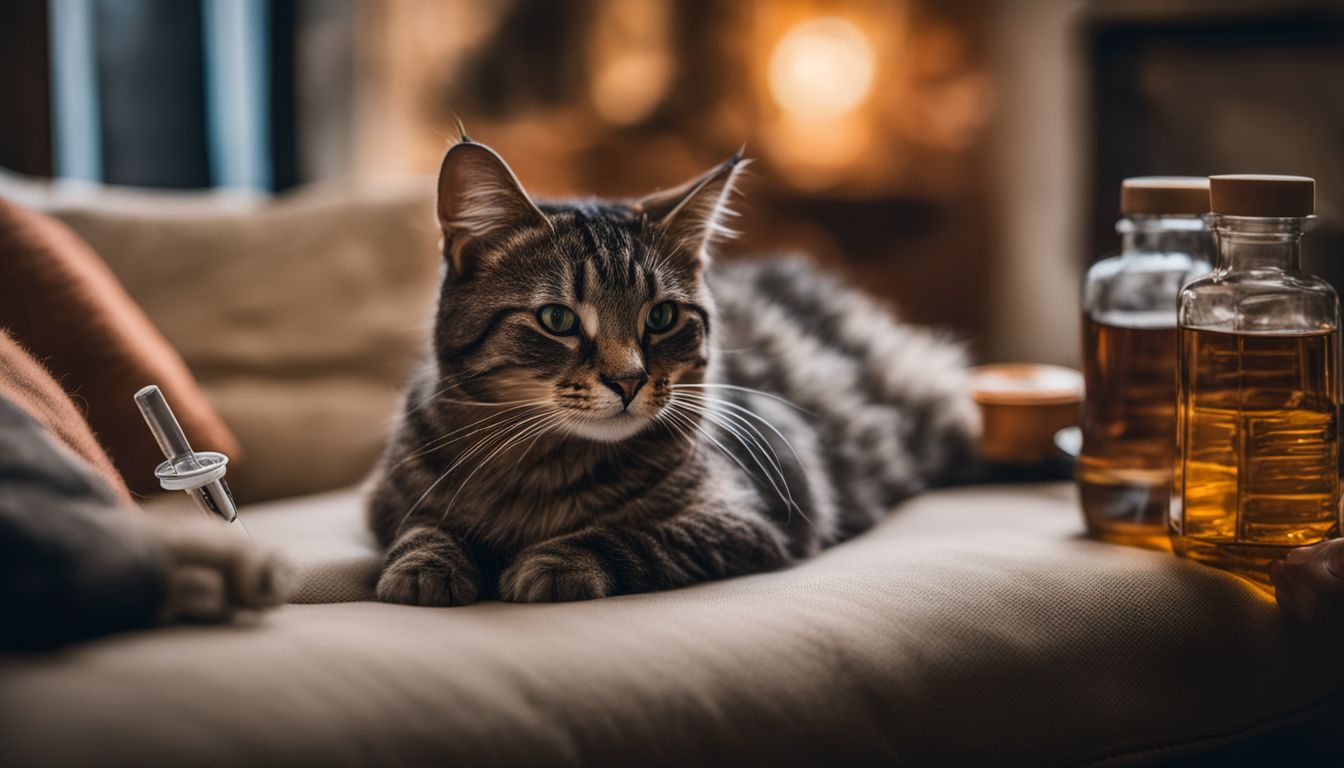
Be patient and gentle when giving your cat liquid medicine, using a reward system with treats, working closely with your veterinarian, and considering flavored medication options.
Being patient and gentle
To successfully give your cat liquid medicine, it’s important to be patient and gentle. Cats can be sensitive and easily stressed, so a calm approach is key. Take your time and handle your cat with care.
Speak softly to reassure them and avoid sudden movements that might startle them. If they become agitated or anxious, pause for a moment and try again later. Remember, being patient and gentle will help create a more positive experience for both you and your fur baby.
Rewarding with treats
When giving liquid medicine to your cat, rewarding them with treats can be a helpful technique. After successfully administering the medication, give your cat a small treat as a reward for their cooperation.
This positive reinforcement can create a positive association with taking medicine and make future administrations easier. Choose treats that are enticing to your cat and ensure they are small enough to be quickly consumed.
By using treats as rewards, you can make the experience more pleasant for both you and your furry friend. Remember to consult with your veterinarian about suitable treats and any dietary restrictions your cat may have.
Working with a veterinarian is important throughout the process of giving liquid medicine to cats, especially when it comes to finding effective ways to administer medication. Your vet can provide guidance on using flavored medications or alternative methods such as pill pockets or injection medications if necessary.
Working with a veterinarian
If you’re having trouble giving your cat liquid medicine, it’s a good idea to work with a veterinarian. They can provide guidance and support to help make the process easier for both you and your cat.
Your vet can show you the best techniques for administering medication, such as wrapping your cat in a towel or using a syringe. They may also be able to recommend flavored medications that are more appealing to cats or suggest alternative methods if your cat is refusing medication.
By working together with your vet, you can find the most effective strategies for giving your cat liquid medicine without unnecessary stress or frustration.
Using flavored medication
Using flavored medication can be a helpful way to give liquid medicine to cats. Cats are often sensitive to taste and texture, which can make it challenging to administer medication.
By using flavored medication, you can make the medicine more appealing to your cat. This can help them be more willing to take their medicine and make the process easier for both of you.
When choosing flavored medication, consider your cat’s preferences and consult with your veterinarian to ensure it is safe and appropriate for their specific needs.
Give a Difficult Cat Liquid Medicine
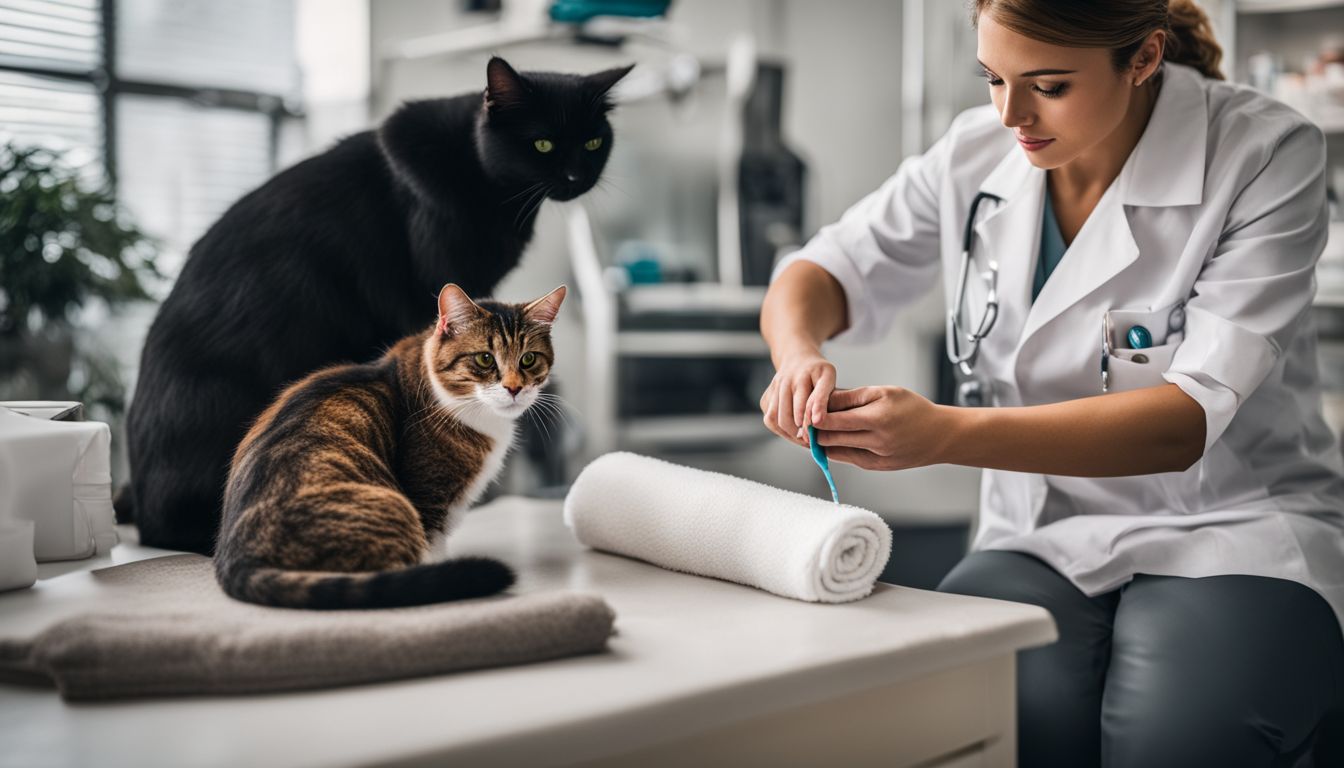
Dealing with aggressive cats, foaming at the mouth, or stubborn refusal to take medication can be challenging. Learn expert tips and alternative methods for successfully medicating difficult cats.
Discover how to master the art of giving liquid medicine in our step-by-step guide!
Aggressive cats
Dealing with aggressive cats can make giving them liquid medication challenging. If your cat becomes aggressive when you try to give them medicine, it’s important to prioritize safety for both you and your furry friend.
One strategy is to wrap the cat in a towel, leaving only their head exposed. This helps prevent scratches or bites while allowing access to their mouth for administering the medication.
Another option is consulting with a veterinarian for advice on handling aggressive cats and exploring alternative methods of medication administration that may be less stressful for your feline companion.
Cats foaming at the mouth
Cats foaming at the mouth can be a common reaction when giving them liquid medicine. This is often due to their dislike of the medication’s taste or texture. It can also happen if they become stressed or anxious during the administration process.
To address this, it’s important to stay calm and patient with your cat. You can try using flavored medication or mixing it with food to make it more appealing. If your cat continues to foam at the mouth or resists taking the medication, consult with your veterinarian for alternative methods or solutions.
Refusal to take medication
Sometimes, cats can be quite stubborn when it comes to taking their medication. They may refuse to open their mouths or spit out the medicine. If your cat is refusing to take their liquid medication, there are a few things you can try.
First, you can try wrapping your cat in a towel and gently opening their mouth. Then, encourage them to swallow by stroking their throat or blowing on their nose. If this doesn’t work, you could mix the medication with some tasty food that your cat likes.
Just make sure to choose the right food and mix the medication thoroughly so they don’t notice it. Finally, if all else fails, consult with your veterinarian for alternative methods or medications that might be easier for your cat to take.
Conclusion
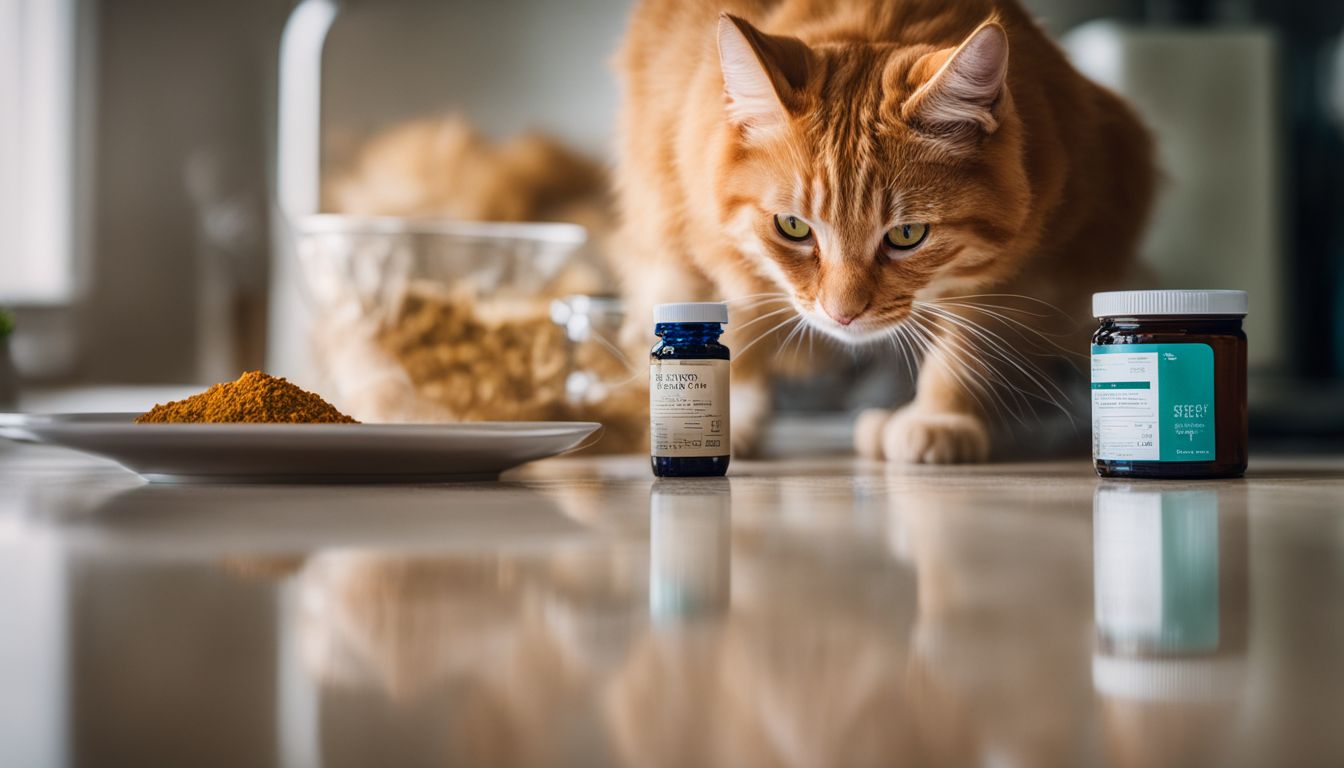
In conclusion, giving cats liquid medicine can be challenging, but with the right techniques and patience, it is possible to master this skill. Whether you choose the direct approach or mix the medication with food, being gentle and working with a veterinarian can make the process easier.
Remember to reward your cat and consider alternative methods if needed. With practice and care, you can successfully administer liquid medicine to your feline friend.
FAQs
1. How do I give my cat liquid medicine?
To give your cat liquid medicine, gently hold their head and use a dropper or syringe to slowly administer the medication into the side of their mouth, being careful not to tilt their head back.
2. What should I do if my cat refuses to take the liquid medicine?
If your cat refuses to take the liquid medicine, you can try mixing it with a small amount of wet food or using a pet pill dispenser designed for giving medication.
3. How much liquid medicine should I give my cat?
The amount of liquid medicine needed will depend on your veterinarian’s instructions. It is important to follow their dosing guidelines carefully and not exceed the recommended dosage.
4. Are there any tips for making the process easier and less stressful for my cat?
Yes, some tips include warming up the medication slightly, praising and rewarding your cat after administering it, and keeping calm throughout the process to help reduce stress.
5. Can I mix the liquid medicine with water or other liquids before giving it to my cat?
It is best to consult with your veterinarian before mixing any medications with water or other liquids as certain medications may interact negatively or lose effectiveness when diluted.

